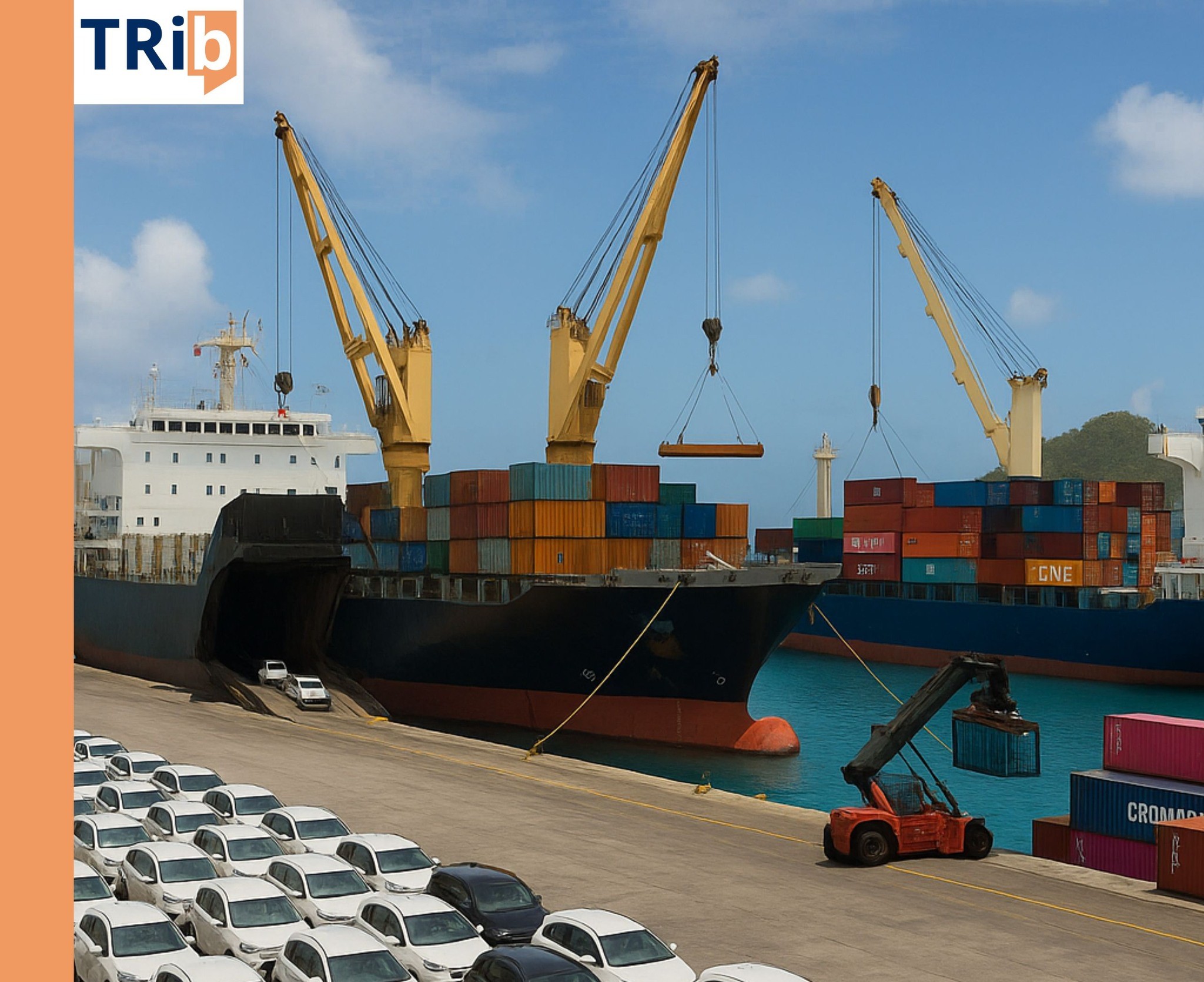GREAT BAY--New data comparing the first five months of 2025 to the same period in 2024 reveals a significant surge in vehicle imports through the Port of St. Maarten.
Between January 1 and May 31, 2025, a total of 1,163 automobiles were imported to St. Maarten, marking a 76% increase over the 659 vehicles imported during the same period in 2024.
Transit activity also experienced a marked uptick. Automobiles in transit IN (vehicles arriving at the port en route to other destinations) rose from 223 units in 2024 to 295 units in 2025, an increase of 32%. Automobiles in transit OUT also climbed from 94 to 175 units, a rise of 86%, suggesting greater efficiency and volume in vehicle transshipment.
Exports of automobiles from St. Maarten remained minimal, with 24 vehicles exported in 2025, compared to 28 in 2024.
The sharp rise in vehicle imports is a strong indicator of economic momentum and logistical relevance. But it also raises serious questions about infrastructure, urban planning, and environmental sustainability. The challenge is to balance growth with quality of life on a small but economically ambitious island.
There are some pros and cons:
𝐏𝐑𝐎𝐒
1. Sign of Economic Activity and Confidence
The 76% increase in vehicle imports reflects growing consumer confidence, stronger household spending power, and likely growth in commercial fleets and dealership inventories. It suggests that residents and businesses feel more secure in making significant investments, an encouraging economic signal.
2. Enhanced Role as a Regional Logistics Hub
The increase in both "Automobiles Transit IN" and "Automobiles Transit OUT" shows St. Maarten’s continued and expanding role as a transshipment hub for neighboring islands. The port’s ability to handle rising volumes of vehicle cargo highlights its operational capacity and strategic location in the northeastern Caribbean.
3. Revenue Generation
More imported vehicles translate into increased government revenue via, registration fees, and road tax. It may also spur more activity in related sectors like auto parts, repair services, insurance, and car rentals, benefiting small businesses across the island.
4. Port Competitiveness
The data positions the Port of St. Maarten as a competitive player in regional logistics. A sharp rise in transshipped vehicles suggests trust from importers and re-exporters in the port’s reliability and efficiency, which could attract more maritime business in the future.
𝐂𝐎𝐍𝐒
1. Traffic Congestion
This is already a major problem. A surge in vehicle imports could worsen traffic congestion on an island already facing limited road infrastructure and chronic traffic bottlenecks, in particular in the vital high tourism season. More cars on the road mean longer commutes, higher accident risks, and growing frustration for residents.
2. Infrastructure Strain
St. Maarten’s road network, parking availability, and very little urban planning were not built to accommodate such rapid vehicular growth. Without corresponding infrastructure upgrades, the increase in vehicle numbers may lead to faster road deterioration, increased parking shortages, and pressure on public services. Without strategic urban planning and transportation reform, the island risks becoming physically overwhelmed by its own growth.
3. Environmental Impact
More vehicles often mean more emissions, noise, and fuel consumption. As an island vulnerable to climate change, St. Maarten faces a delicate balance between economic growth and sustainability. The rise in car imports raises questions about emissions policies, electric vehicle incentives, and quality of life in terms of noise pollution from so many vehicles of all sizes. See less
Join Our Community Today
Subscribe to our mailing list to be the first to receive
breaking news, updates, and more.


